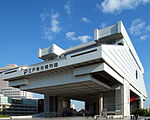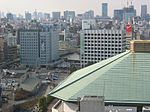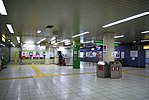Kise stable (2003)

Kise stable (木瀬部屋, Kise-beya) is a stable of sumo wrestlers, part of the Dewanoumi ichimon or group of stables. It was established in its current form in December 2003 by former maegashira and Nihon University amateur champion Higonoumi, who branched off from Mihogaseki stable. The stable's first top division wrestler was Kiyoseumi in January 2008. Its foreign recruit, Georgian Gagamaru, in May 2010 earned promotion to the top division. It is a popular destination for wrestlers with collegiate sumo experience like its stablemaster, and the retirement of Gagamaru in November 2020 opened up another spot for a foreigner.Following the demotion of Kise-oyakata (or stablemaster) in May 2010 after a scandal involving the selling of tournament tickets to members of the yakuza, Kise stable was dissolved with all 27 of its wrestlers moving to the affiliated Kitanoumi stable. Kise was allowed to reestablish the stable in April 2012. All former members, as well as newcomers Jōkōryu and Sasanoyama (now Daiseidō), joined the reconstituted stable. Jōkōryu reached the rank of komusubi in 2014, but has since fallen greatly down the ranks due to injury, and Daiseidō in September 2017 became the eleventh wrestler from Kise to reach jūryō since its founding in 2003. As of January 2022, it has 25 wrestlers, six of them are sekitori (salaried ranks). Kise stable's first makuuchi championship was delivered by Tokushōryū in the January 2020 tournament. The 33-year-old won from the bottom-most makuuchi rank of maegashira 17, after spending all but one of the previous 12 tournaments in the jūryō division.In May 2022 the stable recruited the first ever student of the University of Tokyo, an elite academic institution, to join professional sumo.
Excerpt from the Wikipedia article Kise stable (2003) (License: CC BY-SA 3.0, Authors, Images).Kise stable (2003)
Shuto Expressway Route 7 Komatsugawa Line, Sumida
Geographical coordinates (GPS) Address External links Nearby Places Show on map
Geographical coordinates (GPS)
| Latitude | Longitude |
|---|---|
| N 35.6918 ° | E 139.8 ° |
Address
木瀬部屋
Shuto Expressway Route 7 Komatsugawa Line
130-0025 Sumida
Japan
Open on Google Maps










